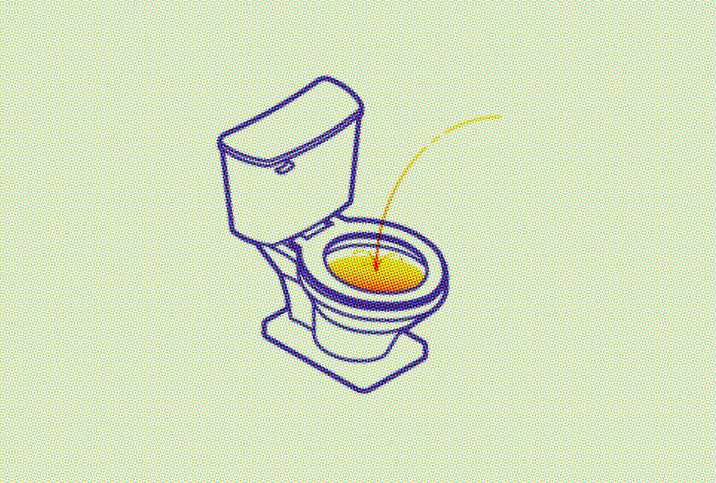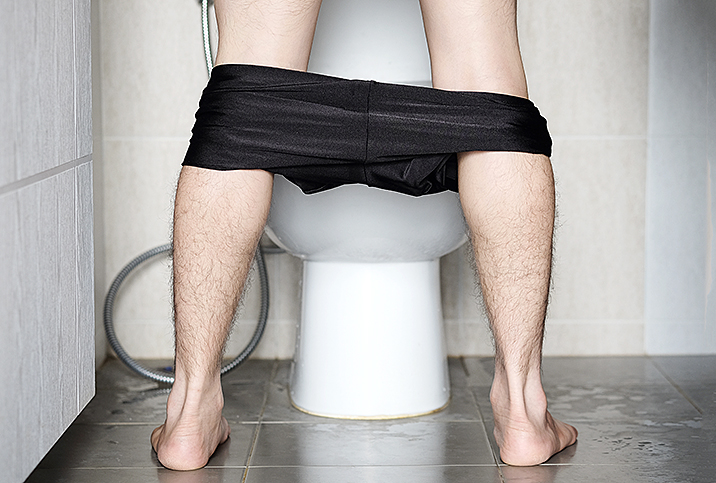Yes, You Can Get a UTI Even If You Have a Penis

A urinary tract infection (UTI) is caused by bacteria in the urinary tract, which includes the kidneys, ureters, bladder, urethra and prostate gland. Any or all of these body parts can get infected. UTIs are referred to as "upper tract" for occurrences in the ureters or kidneys, or "lower tract" for instances in the urethra, bladder or prostate.
Normal urine contains no bacteria, and the one-way flow of urination helps prevent infections. However, bacteria can get into the urine through the urethra, the tube that runs through the penis, and travel into the bladder. UTIs are more common in women because their urethra is shorter and the bacteria do not need to travel as far to reach their bladder.
Approximately 12 percent of men will have symptoms of at least one UTI in their lifetime, according to the American Urological Association, and it's rare (though far from impossible) for men younger than 50 to have the condition.
What causes a UTI in men?
The majority of UTIs in men are caused by the bacterium E. coli, which naturally occurs in the intestines. It can spread from the rectum to the urethra and then to the bladder or kidneys, with an infection developing when the bacteria multiply.
Men don't always contract a UTI from sex, even if they have sex with a partner who has a UTI, because the infection is usually from bacteria already in the man's urinary tract. A stone in the urinary tract blocking the flow of urine can lead to an infection.
Men at a greater risk for UTIs include those who have:
- Kidney stones
- An enlarged prostate
- An abnormal narrowing of the urethra
- An inability to fully empty the bladder
- Diabetes
- An uncircumcised penis
- Low immunity
- Anal sex without condoms
- Used a catheter
What are the symptoms for UTIs?
Common symptoms of UTIs in men include:
- Feeling like you have to urinate often
- Pain or burning sensation when urinating
- Pain or tenderness below the stomach
- Slow urine stream
- Urine leakage
- Bed-wetting
- Blood in the urine
- Cloudy or smelly urine
- Nausea
- Fever or chills
- Fatigue
However, some men with UTIs have no signs or symptoms. Diagnosing a UTI in men is initially the same as it is for women, consisting of a urine sample. However, because male UTIs are considered more complicated, additional testing is often necessary to determine why the man got the UTI. This may include a computed tomography (CT) scan, ultrasound or magnetic resonance imaging (MRI) to look for kidney stones or an enlarged prostate, which could be contributing to the UTI.
Treatment options for UTIs
UTIs are typically treated with antibiotics. A course of antibiotics generally clears the infection within five to seven days.
Medication for UTIs may include:
- Antibiotics such as fluoroquinolones (common brands: Floxin and Cipro XR), nitrofurantoin (Macrobid and Furadantin) and trimethoprim-sulfamethoxazole (Bactrim DS and Septra DS)
- Acetaminophen (Tylenol) or ibuprofen to reduce the fever, pain and discomfort
Your doctor may also prescribe a medicine called phenazopyridine (Pyridium), an analgesic pain reliever that treats the burning and discomfort associated with a UTI. Men with a more complicated UTI might require surgery, which may involve removing inflamed tissue or draining areas of the urinary tract.
Don't try to treat a UTI at home without antibiotics because most infections do not resolve without medication. Delaying treatment can lead to more serious complications, including kidney infection and sepsis. If you are experiencing symptoms of a UTI, it's highly recommended you see your doctor and get a urine test as soon as possible.


















